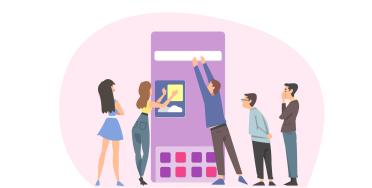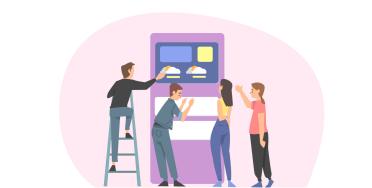What is UX?
User experience (UX) refers to all of the interactions a customer has with a company’s product, in this case we’re specifically focusing on how a user might navigate your site and engage with its content: information architecture, wireframes and navigation all come together to give a memorable experience, create a conversion and drive sales. The more simple and enjoyable you can make the user journey, the more likely they are to return and recommend your product or service.
When initially designing your website, it’s important to be asking yourself, what were the user’s motivations for their search? Did they find the information they wanted easily? Did the product provide a solution to their problem? Well implemented UX takes user psychology into consideration, providing a tailored experience throughout your website.
Moving on to UI (User Interface)
Any discussion about user experience must also mention user interface (UI) design. UI concerns itself with the specifics of a design, touching everything from the typography, to drop-down buttons, colour and images. Branding and user experience are about perception, and both must be consistent for a business to achieve their UX. UI is all about the design choices that make the interfaces aesthetically pleasing and engaging whilst UX is the set of functional design principles. UX usually comes before UI, but an effective and impactful website must have both beautiful UI and functional UX.

Do you think your website needs a UX makeover?
Here’s our top UX tips to get started…
1. Do your research
Decisions behind the design and development of a site don’t just come from thin air; they are based on data created from feedback conducted on user research and user experience. In this stage you will identify your target audience and create user profiles for what sort of people are most likely going to benefit from your product/service. User interviews and journey-mapping a user’s experience from A to B with wireframes and prototypes can help identify how your typical customer might navigate through your site.
2. Assess your accessibility
Your website should be designed to be used by everyone, regardless of their capabilities, such as those with hearing or visual impairments. You can run accessibility tests before your site goes live and make adjustments accordingly. By conforming to such standards you‘ll increase the number of people you can interact with, and therefore increase your number of potential customers.
3. Consider the font
Think about the hierarchy of fonts. Are the titles and subheadings clearly distinguishable from the content on the page? Are sections dividing appropriately? It’s likely that many readers will scan the information on your page, so separating it into smaller chunks makes it more digestible.

4. Make it clear
You want to make the user journey on your site as simple as possible. Making labels and buttons clear and direct, such as ‘Shop Now’ or ‘Checkout’ makes navigating your site easier, and therefore increasingly the likelihood of a sale. Don’t try to be clever about it, this is not the time to be innovative and quirky, you’ll just end up with confused customers and increased bounce rates.
5. Signpost the way
By using clear and consistent navigation tools on your site pages you're leading the user down the route you want them to take. Simple things like a search bar and menu tab at the top of the page and company details and contact information at the bottom, are expected by the user and if you forget these fundamentals then you’re missing the mark.
6. Set out your sitemap
Poorly planned and mapped out site navigation is likely to end in a rather confusing and messy user experience. By creating a sitemap, you’re putting content into categories and creating a cohesive route from point A to B for users. It also makes updating your site and making changes easier as you have an overview of where everything lives in order to add/remove the relevant information.

7. Dictate the device
Using data derived from Google Analytics, you can determine how the majority of your customers are interacting with your site. Are they using a desktop? A mobile phone? If your users are using an iPhone, then you’ll need to provide Apple Pay. Dictating the device that most of your traffic is coming from enables you to make essential design and development decisions to improve the user experience.
8. Avoid overcrowding
Leaving some ‘white space’ and avoiding bombarding users with images, and text that don’t add value helps the brain process information a whole lot better. Clean and simple designs are much more effective and easier to understand. When developing and designing your site, consider how you might organise and structure components. What are the essential elements and what can you do without? Take a minimalist approach and do away with clutter.
9. Keep it consistent
Your brand's image and personality should be represented in the design of your site. Users should be able to recognise your business by how it looks alone. Your aesthetic should be consistent across your entire site, using similar colours, structure, imagery and themes. This makes the product or service you’re offering feel more cohesive and allows your business to better establish a brand identity.
10. Testing, testing, testing..
User testing is not to be undermined. It avoids basic errors and updates once the site is live, not only saving you from embarrassment, but saving time and money too! Things like A/B testing, heat mapping and real-time user feedback can inform you of how users engage with your site and any improvements that could be made.
The bottom line…
Trends will come and go with the seasons, but nailing down the essentials will ensure long-lasting results. You’ll create a product that is representative of your branding, improving the reputation and reliability of your business and making the user experience smoother and more engaging. All these factors create the perfect environment to guide customers through to a point of sale, increasing conversions and keeping them coming back.

